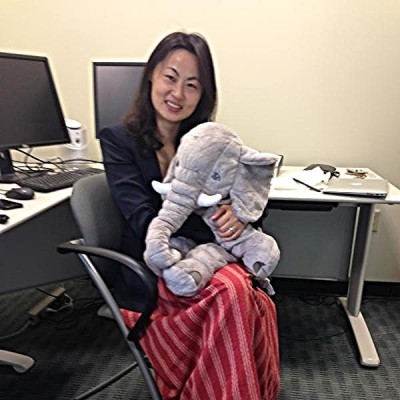I wrote a piece about online retailing for UConn Communication. Here is the link:
http://today.uconn.edu/blog/2014/12/tis-the-season-for-shopping-online/
The full article is below.
‘Tis the Season for Shopping Online
- December 9, 2014
- By: David Bauman
- Category: Nation & World
With online sales accounting for an estimated $294 billion, or 9 percent of retail sales, in 2014, this holiday shopping season sees many traditional storefront retailers – in hopes of staying competitive with their online counterparts – rushing to build e-commerce operations.
Given the increasingly crucial role online retail plays in the American shopping experience, UConn Today invited Jane Gu, an assistant professor of marketing in the School of Business, to share her insights on the impact the Internet is having on the retail industry. Gu’s research focuses on e-commerce and online retailing – investigating how consumers gather information and make purchase decisions in digital environments, and how marketers devise effective digital strategies to cope with such consumer behaviors. Her work has been published in leading marketing journals, including Journal of Marketing Research, Management Science, and Marketing Science.
Q. The growth of e-commerce retailing has made it easier for customers to ferret out the best deals online. Is this what’s driving the boom in online retailing?
A. Better prices are just one driver, and nowadays online deals are not necessarily better than those in physical stores. The boom in online retailing resides in the unique benefits online stores provide to consumers. First, online stores provide shopping opportunities for consumers who live in remote areas with limited access to malls or traditional physical stores, which expands the demand for online retailing tremendously. For example, a recent study shows that the most valuable online shoppers live in the state of Wyoming. Secondly, online stores provide consumers the flexibility to shop whenever they are free, such as at midnight or during holiday periods. Shopping online provides other benefits, such as allowing consumers to learn more about products through reading third-party reviews, and having bulky products delivered directly to their home. For online retailers, price has become just one component of their marketing strategy.
Q. Online sales appear to be the main winner in this year’s holiday shopping blitz, with Channel Advisor – a research firm that tracks transaction data for retailers – reporting that online purchases increased 15.6 percent compared to last year. As more U.S. shoppers move online, is that good news for the retail industry?
A. The transition of shopper traffic from the traditional physical stores to online stores has been happening for a while; and in the past couple of years, this transition has sped up. As more consumers go online to shop, fewer bother to visit physical stores, which constitutes a challenge for retailers. The loss of store traffic could be damaging for retailers that solely operate physical stores; for retailers that operate both online and offline stores, this transition of shopper traffic means the loss of face-to-face contact opportunities, which is essential for building customer loyalty. Many retailers are aware of this issue and have started testing innovative ways to attract shopper traffic into physical stores. For example, Lion Brand Yarn opened a studio in New York City to showcase new high-end offerings, provide classes and build community with their customer base. Many multi-channel retailers that operate both online and traditional storefronts are moving to the so-called “omni-channel strategy.” That is, they deliberately coordinate product assortment, pricing, and promotions across their online and physical stores so as to maximize the total profit rather than operating two channels separately.
Q. If the online retail business is apparently so much more profitable than storefront retailers, why don’t online giants like Amazon, eBay, or Overstock have higher profit margins?
A. Giant retailers such as Amazon, eBay, and Overstock usually focus on market coverage or sales volume at the expense of margin. Their counterpart in the offline world would be Wal-Mart, which also operates on thin margins. Online retailers incur costs to maintain distribution centers and handle high rate of returns. That said, online retailers do not necessarily operate on narrow margins. While Amazon’s net profit margin is about 0.5 percent and eBay’s net profit margin is about 14 percent, the Chinese online retailing giant Alibaba, which recently launched the world’s largest – $25 billion – IPO (Initial Public Offering, whereby a company raises capital by issuing shares of stock in a public market), has a net profit margin over 40 percent. Alibaba’s success has triggered much debate over Amazon’s business model.
Q. How much do free shipping costs eat into the margins of online-shopping websites like Amazon, compared to the fixed expenses that brick-and-mortar retailers incur on such things as rent, employees, and electrical costs?
A. Free shipping actually is not such a big margin-eater compared to the cost of delivering the same product to physical stores and other costs associated with operating store networks. Moreover, given the large shipping volume, online retailers can often negotiate good deals with mail carriers. Free shipping also motivates consumers to buy – that’s why free shipping is the most common type of online promotion. A bigger margin-eater for online retailers is the cost of handling goods that are returned; in some cases these costs exceed the product value. Since online shoppers can only find out whether they like the product after they have received it, in contrast to shoppers at physical stores who have the chance to inspect items prior to purchase, the return rate is much higher for online retailers. For consumers, however, free return is a big motivation to buy, and that’s why nowadays we see more and more online retailers offering free returns, even if it cuts into their profitability.
Q. Congress seemed ready to pass a bipartisan measure earlier this year to end tax-free online shopping, but opposition has delayed passage during the current lame duck session. Will Congress ever enact an online sales tax policy?
A. I actually believe this will happen; it’s just a matter of time. Online retailing has become a main source of growth in the retail industry, compared to 10 years ago, and needs to be regulated accordingly. In the meantime, I am concerned that the online sales tax policy will hurt small businesses that take advantage of the Internet to thrive.
Q. Three states do not collect any state or local sales taxes: Delaware, New Hampshire and Oregon. Is there evidence that shows Connecticut shoppers travel to tax-free New Hampshire outlet malls to find bargains and avoid the state’s sales taxes?
A. I do not have data, but know anecdotally people who do that. Indeed there are some online shoppers who have their orders shipped to their friends living in the tax-free states.


